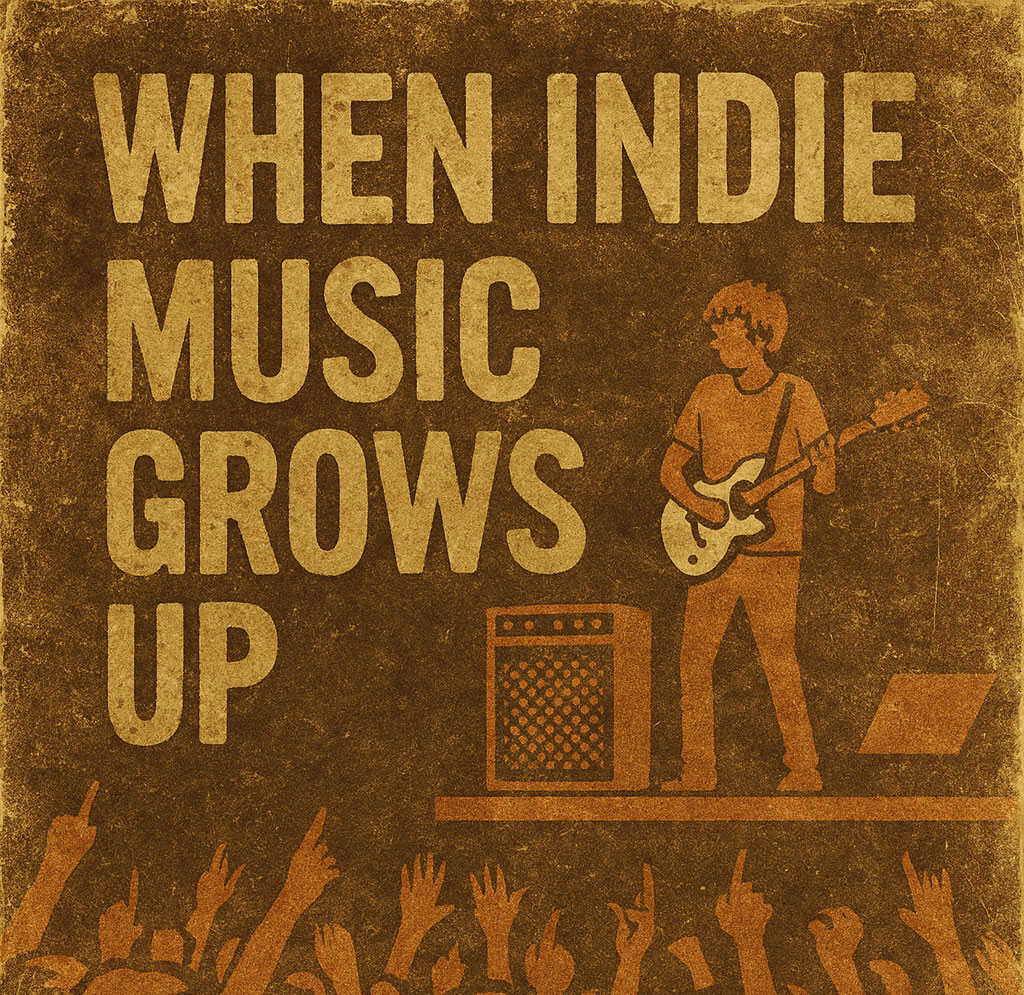From basement shows to festival stages, what happens when indie refuses to stay small?
There’s something magical about seeing a band in a cramped basement, wires taped to the floor, sweat dripping from the ceiling, twenty-five people shouting every lyric back at them. That’s the version of indie most of us fell in love with — raw, risky, and a little rough around the edges.
But what happens when that same band goes from the basement to the big stage? When the scrappy kids who burned their own CDs are suddenly headlining festivals and selling out arenas? Does indie lose its edge when it grows up, or is growing up part of what makes indie powerful in the first place?
The Early Spirit
Indie music started as rebellion. The Velvet Underground were never chart-toppers, but they reshaped what music could be. Minor Threat turned DIY into a way of life, pressing their own records and booking their own tours. Bikini Kill handed out zines at shows before most labels even cared about them.
Back then, indie wasn’t about aesthetic. It was survival. You either built it yourself or it didn’t exist.
The Spotlight Era
By the early 2000s, indie wasn’t just underground anymore. The Strokes were plastered across magazines. Arcade Fire could sell out theaters with church organs and violins. Interpol made post-punk cool again in tailored suits.
Indie had moved from sweaty house shows to fashion spreads and festival lineups. Some fans saw this as selling out. Others saw it as validation: proof that weird, honest music could compete with the mainstream.
Indie in 2025
Now we’re in a strange middle ground. Indie is bigger than ever, but also harder to define. Mitski can headline Madison Square Garden and still feel like she’s singing to one person in their bedroom. Big Thief moves between delicate folk and chaotic noise without caring about radio play. Turnstile started in hardcore scenes but now have late-night TV spots and crossover success.
Indie has grown up — but it hasn’t gone away. It’s still about creative control, honesty, and connection. The venues may be bigger, the gear fancier, but the heartbeat is the same.
The Growing Pains
Of course, there are trade-offs. Bigger budgets can smooth out the edges that once made indie dangerous. Algorithms and streaming platforms push certain sounds over others. And sometimes the word “indie” gets co-opted by labels who like the image but not the ethos.
But here’s the truth: indie isn’t about staying small forever. It’s about staying free. Whether you’re playing in a garage or on a festival stage, indie is alive as long as the music is made with integrity.
Closing Thoughts
When indie music grows up, it doesn’t have to mean selling out. It means proving that honesty and risk-taking can survive in bigger rooms. It means carrying the DIY spirit into new spaces and showing a new generation that freedom can scale.
At SONIQLOOX, that’s what we’re here to capture — the messy in-between moments, the raw portraits, the noise that refuses to get polished into silence. Indie music isn’t just about youth. It’s about resilience. And when it grows up, it just gets louder.
Sound + Image, delivered weekly
We publish raw portraits, photo essays, and indie thinkpieces. Get the Thursday issue in your inbox.
Subscribe on Substack →No spam. Unsubscribe anytime.

